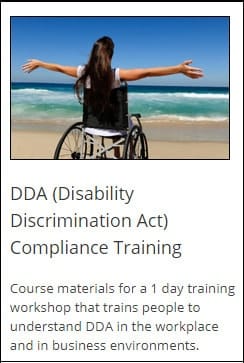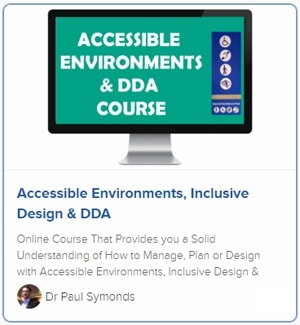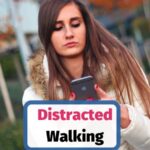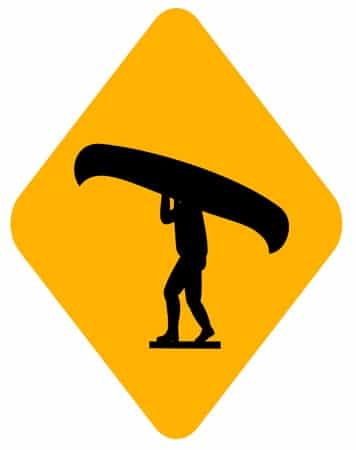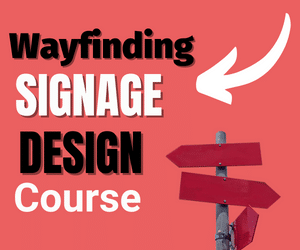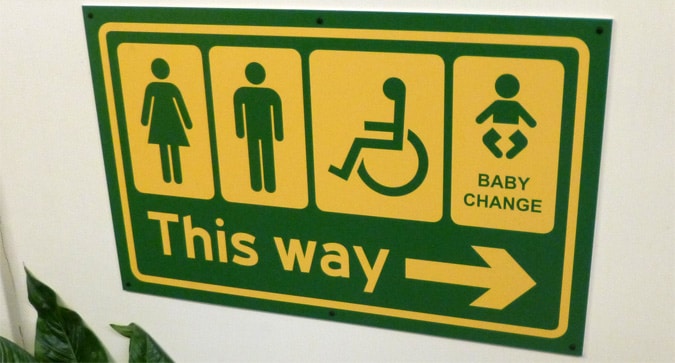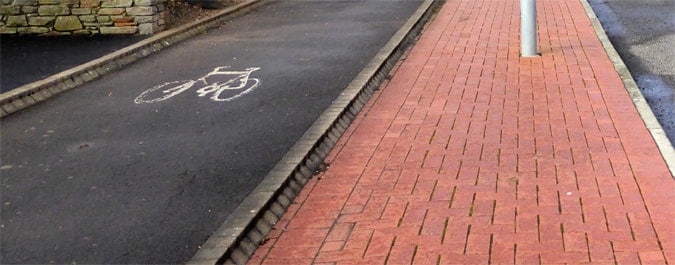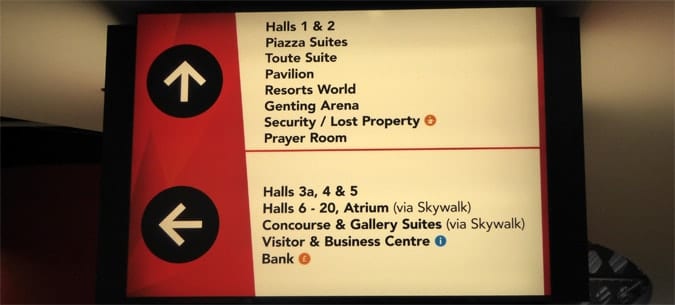Last Updated on June 12, 2023
Trying to find solutions to improve the experience for blind travellers is not generally a commercially viable process. Yet, by law, in many countries, all passengers have the right to accessible travel.
The DDA regulations have, for example, tried to address this. In this post, I ask, how can visually impaired and blind travellers be helped more?
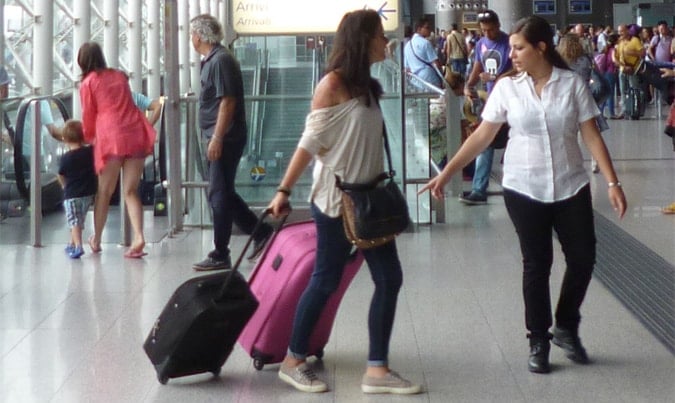
With almost 300 million people worldwide suffering from visual impairments, I am sure you will agree that it is essential that provision is made for everyone, no matter their ability or disability, to be able to enjoy travelling if they so desire.
There is, of course, a conflict in many aspects of wayfinding in that signage is certainly one of the key ways in which we are aided directionally.
There are though many other ways in which we often are and also can be directed and help to navigate travel spaces.
These ways are essential if we want to do all we can to aid visibility impaired travellers.
Table of Contents
DDA, Wayfinding and Visibility Issues
It is perhaps worth explaining first that when we talk of the visually impaired, we are talking of everyone including those who have minor sight problems, but who still find that it makes it harder for them to travel. Many of us, when we get older, may even begin to fall into this category.
Then there are those with more distinct problems with sight such as those suffering the loss of central vision (macular degeneration) or those with only one half of their field of vision still working.
And then there are those who are totally or almost fully blind. Whatever the level of sight and visual ability, I would argue that everyone has a right to be able to travel and that a certain responsibility for this lays with the travel service providers.
Accessible travel and mobility is something which the travel industry is gradually becoming more aware of, yet there is so much that can still be done.
But, there are some things that are happening in the world of travel that may help visually impaired and blind travellers and some of these are the results of new technologies.
One of the big problems that can occur and which I have seen happening a lot in tourist locations in the last few years is when stakeholders make the routes longer which need to be navigated, in order to try and satisfy the commercial interest.
Bristol airport, England, for example as from two years or so ago, started forcing all travellers to have to zig-zag through the Duty Free area as soon as they have successfully passed through the security checks area.
For a blind or visually impaired traveller, such a route certainly does not simplify the wayfinding process.
Latest Technologies
Indoo.rs
There have been many technologies in the last years that have been designed for blind and visually sighted travellers, but few have really taken off en-masse. Some of the best creations though include the following:
Indoo.rs airport app – Indoo.rs are an Austrian start-up company who are getting a lot of press coverage recently with their beacons technology.
They are presently one of the leading companies involved with trying to develop apps for indoor travel spaces, and they are now testing an app for visually impaired travellers.
The system uses a technology that seems too fast to be popular for navigating indoor environments, namely, Beacons.
This technology and the idea is to use a significant number of small transmitter beacons, which sends signals to your Bluetooth device.
Using these signals, your device (i.e. smartphone) is then able to provide you with much-needed navigation information.
As you, the user, walk by the transmitter, your phone will pick up information such as the close-by facilities (including toilets and shops) and guide you accordingly.
In the future, if such as system is able to be developed as part of a context awareness system, the possibilities for the blind and hard of sighted travellers are exciting.
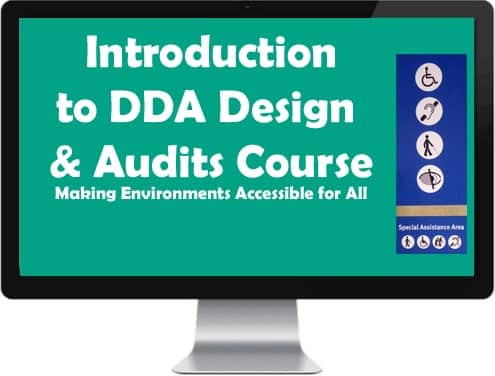
iBeacons
Indoor beacons, such as those provided by iBeacons, are already gaining a lot of attention. iBeacon, which is owned by Apple, are one of the leaders in beacon technologies for indoor wayfinding and this is potentially excellent news for blind and visibility impaired travellers.
iBeaons send one-way data to your smartphone and this data, depending on how the service is developed, could become important for this user group.
The beacons could be used for everything from sending warnings for obstacle avoidance (helping those who cannot see well to avoid certain obstacles, as they navigate through an indoor environment); to sending audio information through for the traveller to listen to (as opposed to the user otherwise needing to be able to view flights departure boards, for example); through to audio guidance for navigating full paths through a travel space such as an airport.
Information Provision
One of the big issues is clearly in the thinking and provision of signage in many places through which blind and visually challenged travellers must navigate.
Audio and Signage
Stakeholders, in the form of airport owners, tourist attraction management, bus terminal owners and so on, still place far too much emphasis on creating wayfinding systems that are almost exclusively designed around well-sighted travellers.
The problem, of course, is that, with visual signs, they may be too high or just too hard for some people to see.
Audio announcements do provide an alternative form of information for travellers, but in busy travel spaces such as airports and bus stations, or even in hospitals or on university campuses, the sheer number of people in mobility in the area can make audio announcements often hard to hear clearly.
Pre-Travel Aids
Apart from the potential via technologies such as iBeacons for indoor wayfinding, one real area of opportunity in aiding visually impaired travellers is also in the pre-planning that can aid those in need of help.
There is a need though for a central database that can provide extensive data on, for example, all major airports and detailed information including directions, layout, bespoke factors and temporary issues such as detours.
Just like with any traveller, the higher the level of familiarity with a location, the easier it generally tends to be to navigate.
The level of familiarity though is accentuated with those with poor or no sight. The information which is available through audio or voice-activated responses or is available online (and can be viewed for example on a large screen and magnified), can help some travellers.
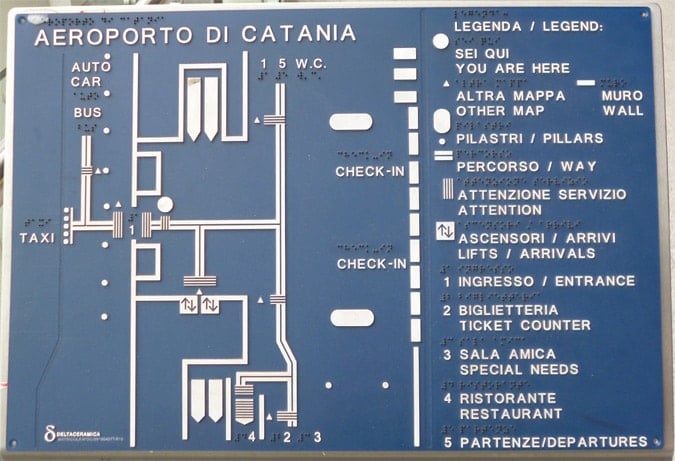
Tactile Maps
Tactile maps, such as the one shown above, can certainly act as useful aids.
The problem though is that the tactile map above is inside the airport departures area and I am not fully sure that a blind person would have much success in finding it to start with.
Placing such a map just inside or outside an entrance (to the side) would make it much easier one would assume.
Many lifts (elevators in American English) tend these days to have tactile buttons, but this type of aid is one that is still relatively unused and there will be, one hopes, technologies that enable tactile maps to be not required.
A tactile map such as the one in the photo is expensive to produce and can very quickly become out of date. Catania Airport, for example, in which the photo was taken, is fast expanding and changing.
Online Help
The great news is that there is more awareness than there has ever been in helping people with a wide range of disabilities.
A search, for example, of some travel providers and travel locations, shows that such companies are at least beginning to try and provide better information.
Picking some UK travel service providers websites at random to get an idea of what presently exists in terms of online help:
- Easyjet – offer assistance for travellers, but the text is so far down the page and so small and does not seem to be available in audio format on their site. Thus the information might well be missed by those who need to read it the most. (The same might be said about this post in honesty). A service such as ReadSpeaker can be the answer.
- National Rail – There is a separate phone number and link for each of the different rail providers and this seems extremely confusing. I do not usually take note of what train company are providing the trains. One central database certainly seems to be needed and, given the importance of such a service, this seems as though it is something on which the providers should be willing to work on together.
- Heathrow Airport – I am not sure if you will believe me unless I paste a copy of the text below. The Heathrow Airport website asks blind travellers to “…look for signs showing the sympathetic ear symbol”. This I think you will agree, might be quite a challenge for a blind person.

Tactile Ground Surface Indicators (TGSIs)
Tactile Ground Surface Indicators are a great aid for the visually impaired and such aids are cost-effective, relatively speaking.
Such aids do not need to be changed so often, such as a tactile map of an airport might need to be.
TGSIs, for those of you who are unsure as to what they are, are subtle changes in the surface that can be used to detect the edge of a pavement for example.
TGSIs act as a warning under your feet one might say.
Chances are you have seen a TGSI yourself and most likely when you have been on a train or underground train platform.
Close to the edge of the platform, you will notice that the surface is rougher, i.e. with a kind of dotted rough section.
This will tell a blind person that they are getting close to the edge of the platform.
TGSIs can be used in many travel spaces and are extremely simple and yet very effective aids.
5 Point Plan for Travel Locations
- Ensure that paths are as clear as possible, without obstacles. Checks should be made hourly by a member of staff.
- Ensure that surfaces are even.
- Use tactile surface indicators where they can be helpful.
- Provide online information such as large printable maps and make the information as easy to find as possible. I personally believe that every travel provider should have all disabled information linked from the bottom of every page (close to the Terms and Conditions and Contact Us linked pages, which are usually on the bottom menu of many travel sites). I advocate making Disability, mobility and Accessible travel information be made as easy as possible.
- Make ‘Help Points’ easy to find from the start.
Further Information
- UK – Travel support for the blind via the RNIB.
- U.S. Air Consumer Rules covering the disabled.
- Travel Eyes International – offer holidays specifically catering for the blind and is a company originally founded by Amar Latif, who is blind himself. One of the main UK company’s for visually impaired travellers.
If you are interested in solutions relating to DDA, please see our training courses.
Dr Paul Symonds has a PhD in Wayfinding from Cardiff Metropolitan University in the UK. Paul works with the signage industry, airports and other locations providing wayfinding audits, consultancy and training.

